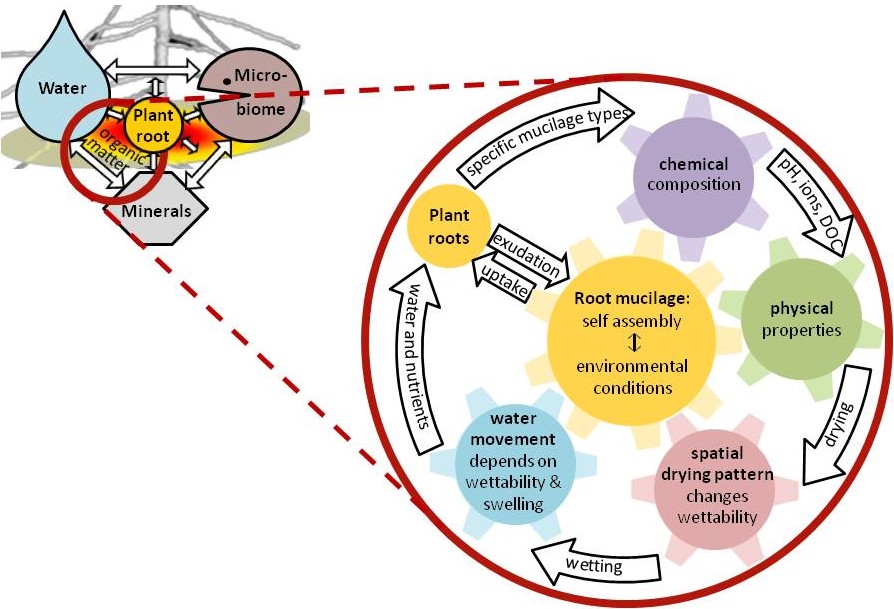Project participated only in SPP-Phase 1
P5 - MUCI-WETT-PATT
The role of self-assembling of root mucilage for the formation of spatiotemporal wettability patterns in the rhizosphere

Root mucilage may turn hydrophobic after drying, thus buffering extreme hydraulic conditions in the rhizosphere. Changes of the chemico-physical properties of root mucilage as a response to varying environmental conditions in the rhizosphere have been little understood until now, particularly the water repellency of dried root mucilage.
The MUCI-WETT-PATT project aims at answering the following questions:
1. How do the chemical properties of mucilage influence its gel physical properties?
2. How do the physical properties of mucilage influence the drying behavior and the resulting spatial hydrophilic/hydrophobic patterns of dried mucilage?
3. Which consequences do these spatial patterns have for hydraulic properties of the rhizosphere during drying and rewetting?
We hypothesize: Mucilage is a self-assembled hydrogel. Due to its self-assembled chemical structure, mucilage may respond to changes in the environment by modifying its supramolecular arrangement, which in turn influences its physical properties. Those determine the spatial arrangement of mucilage during drying and by this also the hydraulic properties during the subsequent rewetting.
The chemical composition and molecular weight of the various compounds found in root mucilage will be characterized. Dialysis and swelling experiments will demonstrate the effect of environmental conditions on mucilage physical properties and will draw potential links to its chemical properties. Macroscopic rheology, as well as 1H-NMR and DSC will be combined with microscale methods (AFM) determining input parameters for the simulation of liquid bridges of mucilage during drying. We will experimentally and numerically quantify the relations between the microscopic drying patterns of mucilage, its macroscopic wettability and its macroscopic hydraulic properties. Coupling molecular-chemical properties and nanoscale-spatial arrangement of mucilage with macroscale-hydraulic processes may improve our understanding of the rhizosphere as a dynamic self-organized system.
Link to English scientific abstract
Link to German scientific abstract
